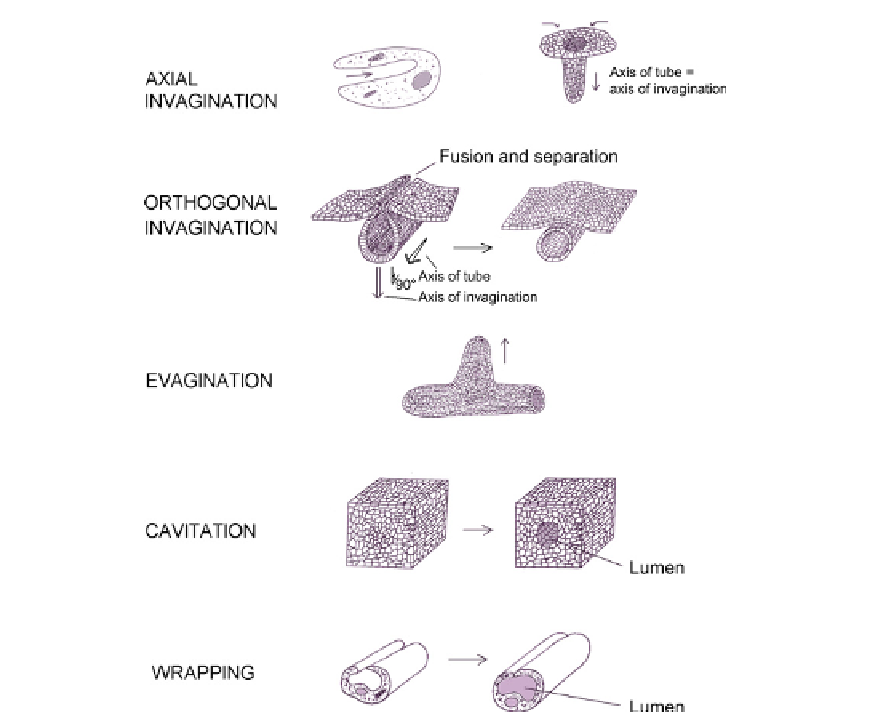Biology Reference
In-Depth Information
FIGURE 18.1
The five basic methods by which tubes can be made. Axial invagination can take place at the scale
of an individual cell or an epithelial sheet and proceeds by infolding of the cell or sheet surface along what will be
the axis of the tube. Orthogonal invagination proceeds by infolding of a line of epithelium in a direction at right
angles to what will be the axis of the tube to form a trough, the lips of which then fuse and separate from their
parent epithelium. Evagination is similar to invagination but involves outfolding rather than infolding. Cavitation
creates a tube by clearing cells away from a line in an initially solid tissue, either by cell rearrangement or cell death.
Wrapping consists of a cell curling up on itself; it is topologically distinct from orthogonal evagination because
wrapping involves adhesion of the opposite sides of the cell but does not involve their fusion.
altering according to the situation. The following paragraphs will first consider each mech-
anism in turn, and then describe a system in which they operate in tandem.
MODELS F
OR AXIAL INVAGINATION (1): APICAL CONS
TRICTION
In a 'resting' cuboidal epithelium, not undergoing any kind of bending, cells tend to have
a rectangular appearance, their lateral membranes running parallel (
Figure 18.2
, top). In an
invaginating epithelium, at least some cells become wedge-shaped, their apical diameter

